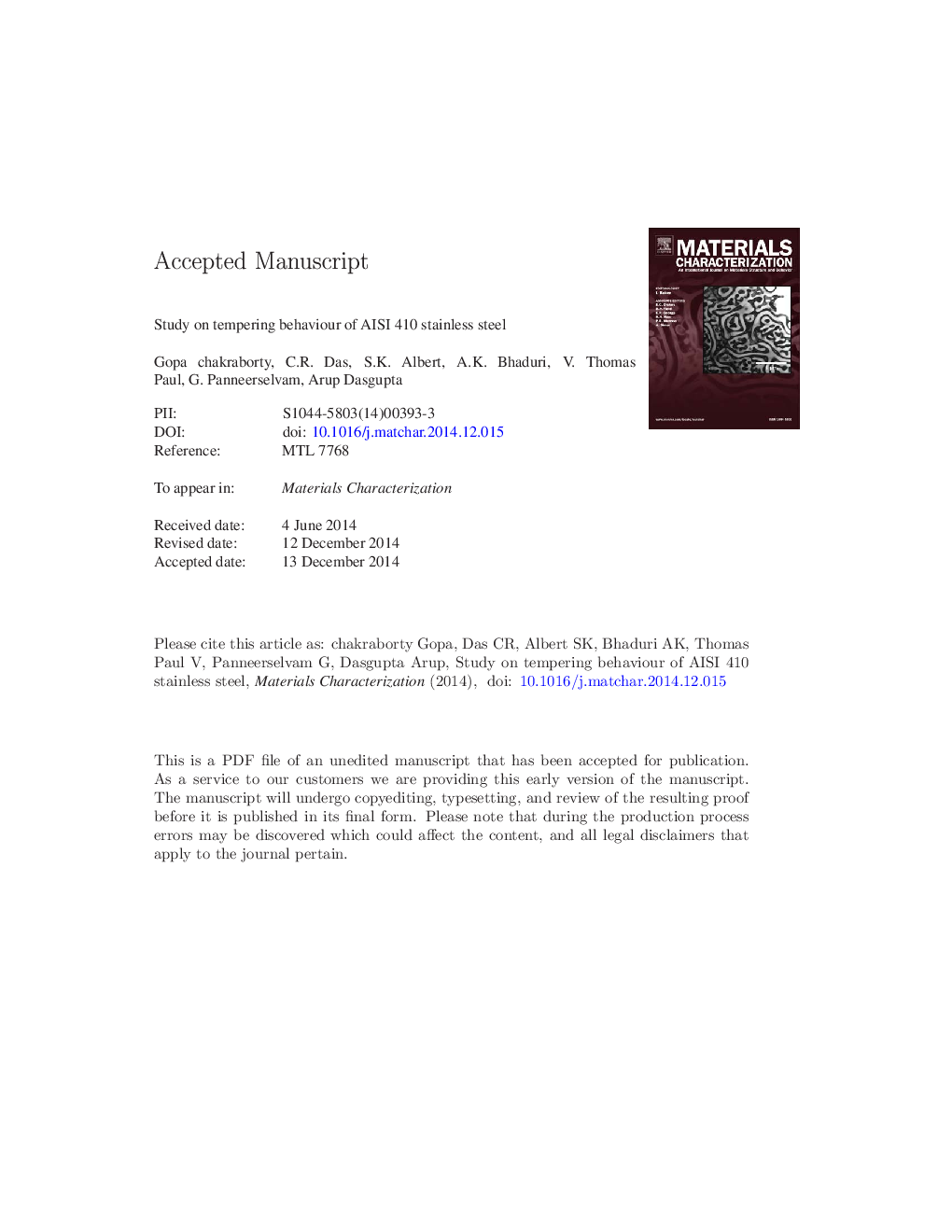| Article ID | Journal | Published Year | Pages | File Type |
|---|---|---|---|---|
| 7970488 | Materials Characterization | 2015 | 22 Pages |
Abstract
Martensitic stainless steels find extensive applications due to their optimum combination of strength, hardness and wear-resistance in tempered condition. However, this class of steels is susceptible to embrittlement during tempering if it is carried out in a specific temperature range resulting in significant reduction in toughness. Embrittlement of as-normalised AISI 410 martensitic stainless steel, subjected to tempering treatment in the temperature range of 673-923Â K was studied using Charpy impact tests followed by metallurgical investigations using field emission scanning electron and transmission electron microscopes. Carbides precipitated during tempering were extracted by electrochemical dissolution of the matrix and identified by X-ray diffraction. Studies indicated that temper embrittlement is highest when the steel is tempered at 823Â K. Mostly iron rich carbides are present in the steel subjected to tempering at low temperatures of around 723Â K, whereas chromium rich carbides (M23C6) dominate precipitation at high temperature tempering. The range 773-823Â K is the transition temperature range for the precipitates, with both Fe2C and M23C6 types of carbides coexisting in the material. The nucleation of Fe2C within the martensite lath, during low temperature tempering, has a definite role in the embrittlement of this steel. Embrittlement is not observed at high temperature tempering because of precipitation of M23C6 carbides, instead of Fe2C, preferentially along the lath and prior austenite boundaries. Segregation of S and P, which is widely reported as one of the causes for temper embrittlement, could not be detected in the material even through Auger electron spectroscopy studies.
Related Topics
Physical Sciences and Engineering
Materials Science
Materials Science (General)
Authors
Gopa Chakraborty, C.R. Das, S.K. Albert, A.K. Bhaduri, V. Thomas Paul, G. Panneerselvam, Arup Dasgupta,
